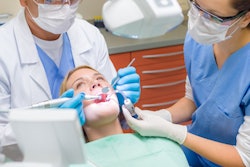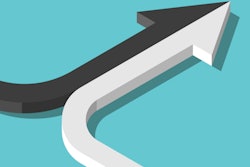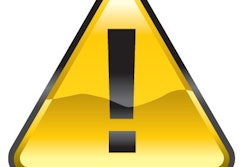
As of June 1, about 90% of dental practices had reopened and patient volume had rebounded by up to 65%, depending on location. However, some industry experts warn that a complete bounce back from the pandemic isn't likely in 2020.
Though numbers have risen each week since states have begun reopening, high rates of unemployment, the possibility of a second wave of COVID-19, and changes in patients' attitudes may threaten a 100% return to business as usual, according to a panel discussion hosted on June 11 by the ADA Health Policy Institute (HPI).
"I can't see how it is 100% feasible simply due to the employment numbers," said Marko Vujicic, PhD, chief economist and vice president of HPI.
"Even if the jobs are in sectors that don't provide comprehensive dental insurance, there's still a knockoff effect from unemployment," he noted.
The rebounds in employment that have occurred in states such as Florida, Georgia, and Texas were likely due to "significant pent-up demand," said Steve Beuchaw, director of Wolfe Research.
Using a combination of web search and social media activity data, Beuchaw's firm can track consumer sentiment by a one- to two-week lead. The data showed, for example, that in some areas in Georgia, people were pulling back from going to the dentist, he noted.
"We're not going to be back to normal for a while," Beuchaw said.
It's complicated
The future depends on what is "normal," said Ty Hamilton, chief operating officer of P&R Dental Strategies.
The industry goes through natural depressions. Typically, visits to dentists decline in July when patients are less motivated to go, but then the number ticks up in August and September when parents are preparing their children to head back to school, Hamilton said.
"If you really got back to truly normal, July wouldn't look like April," she said. "It would be much lower. Rolling seasonality will add dimensions to this."
Stephen Thorne, CEO and co-founder of Pacific Dental Services, remains "cautiously optimistic" that a 100% return in 2020 is possible based on his data, but he noted that having 30 million to 40 million unemployed people makes him nervous.
"We're coaching our teams to be hypercautious and safe," Thorne said. "I think there is a little overconfidence out in the marketplace now because of the demand that came back so fast. Our data show if we can stay focused, we can be back above 100% much sooner than we thought, and it will be this year."
Beuchaw noted that the journey back may not be as smooth for solo dentists in comparison to dental service organizations (DSOs).
Noting that 700 of Pacific Dental Services' doctors remained open for emergency and urgent treatment during the pandemic, Thorne agreed that being upfront, available, and communicative was a "massive benefit."
If practices return to pre-COVID-19 levels, Vijay Sikka, CEO and founder of Sikka Software, said there will be other economic impacts.
"If we reach pre-COVID-19 levels, dental production may not grow as much as it normally grows," Sikka said. "Dental production reached 40% higher than it was 2009. It may not be there in 2021."
Don't look too far ahead
What the third quarter looks like will shed light on dentistry's future, Hamilton said.
Data show that people didn't just visit the dentist for emergencies, specifically in places like Arizona and Texas. Currently, both states are seeing spikes in COVID-19 cases.
"How much of this is early adopters and the pure need for normalcy -- the 'I really want to get back to my normal routine and that means going for my regular scheduled visit?' " Hamilton asked.
Texas didn't see the early, extreme impact of COVID-19 like some states, such as New York, so people didn't hesitate too much to jump back in and start doing their normal routines, she noted.
"If it, in fact, changes, we can expect it to change behavior. This is purely my thought, but we'll be looking at subtle changes," Hamilton said.
A second ripple
If another COVID-19 wave strikes, will the U.S. Centers for Disease Control and Prevention (CDC) and the ADA call for practices to postpone all nonemergency procedures again?
"It will be geographically specific but more measured than the initial response," Hamilton predicted.
Though many practices are more prepared with even better infection control practices in place, Sikka said it's hard to guess. If history repeats itself, like it did during the 1918 pandemic, all bets are off.
"The second wave of the 1918 pandemic was worse than the first," Sikka noted. "If something like that happens, you don't know."
The fate of the dental industry hinges on whether people continue to wear masks.
It's not a question about dentistry but one of epidemiology, Beuchaw said.
"If the virus spikes, people will get worried," he said. "People are certainly aware of aerosolization concerns. If people wear masks, we are good. If they don't, then we have a problem."
Nevertheless, most dental practices are better prepared to handle another wave. Negative pressure sounded difficult to deliver six months ago, but dentists have done it, Beuchaw said.
"The focus needs to be on being good actors, good people wearing masks when we are not inside on Zoom," he said. "Do that and it'll be OK."




















